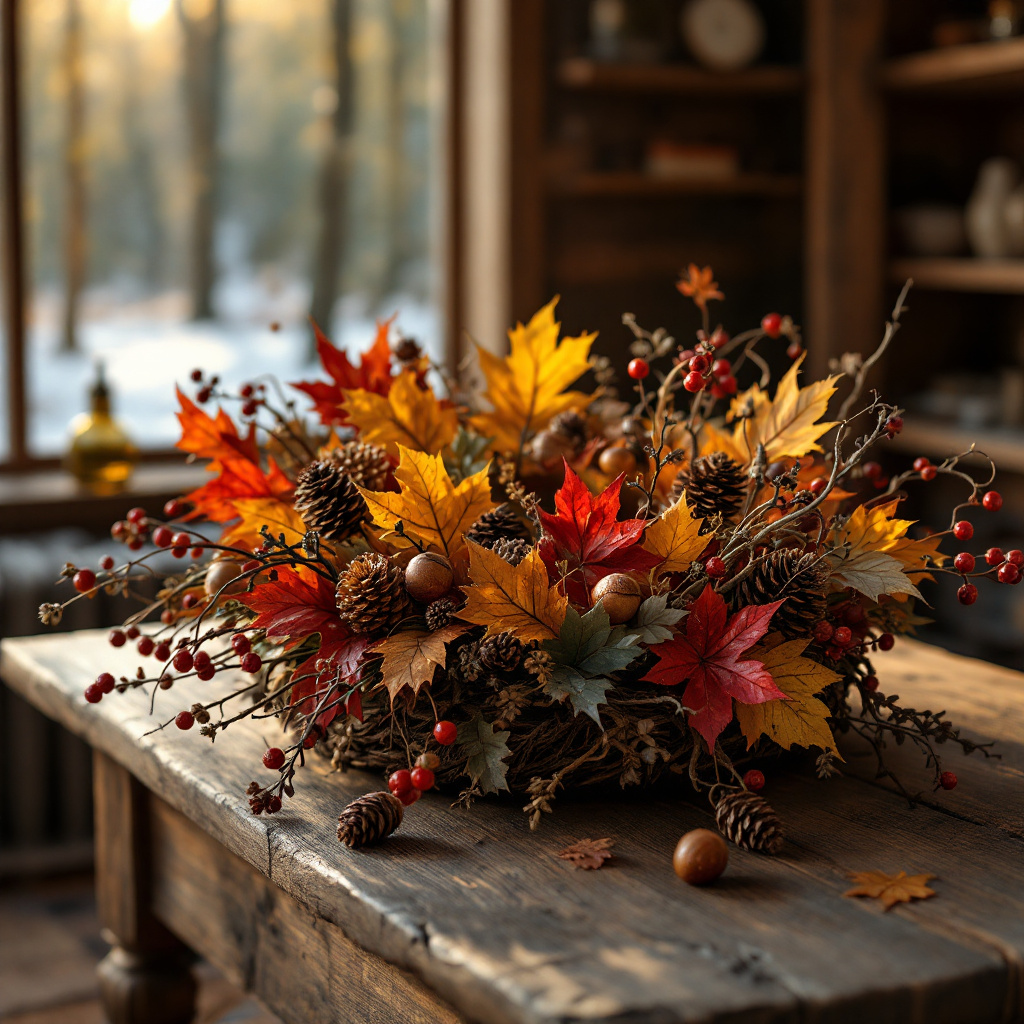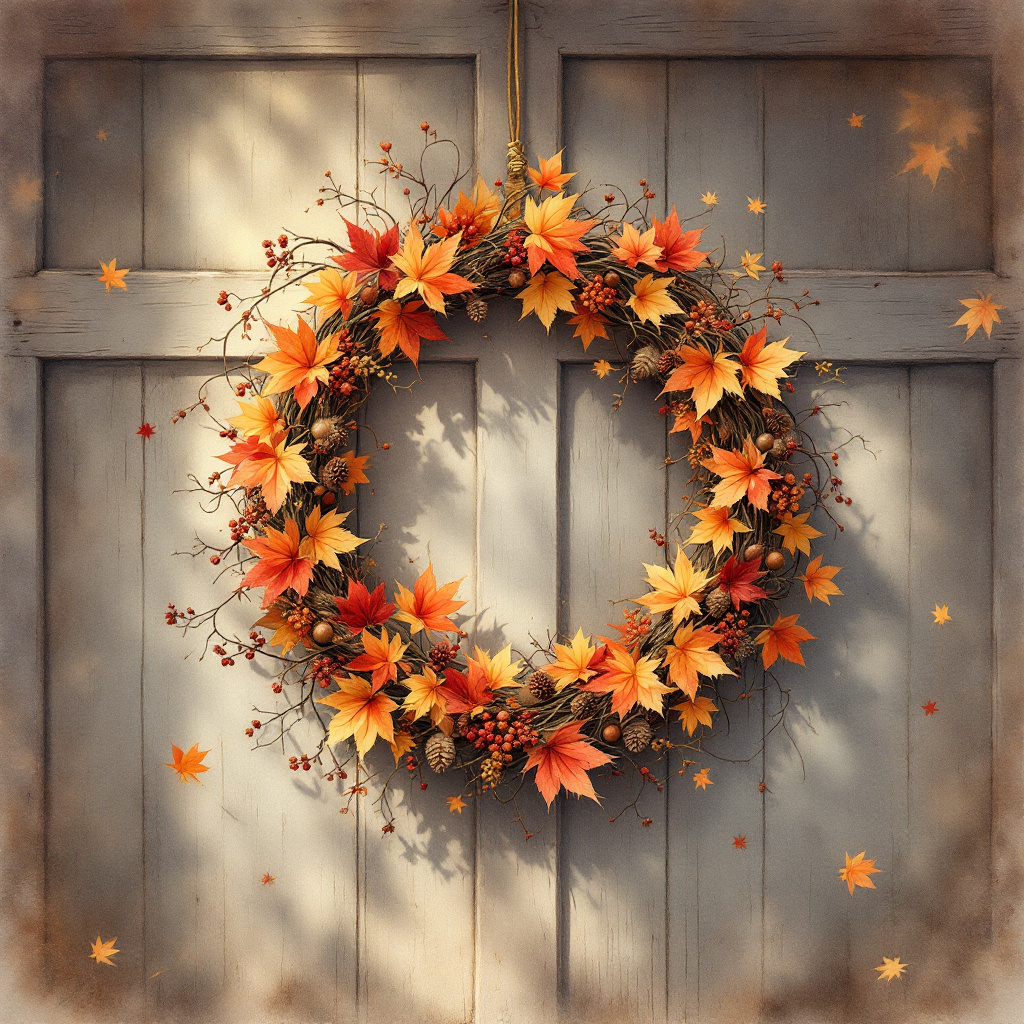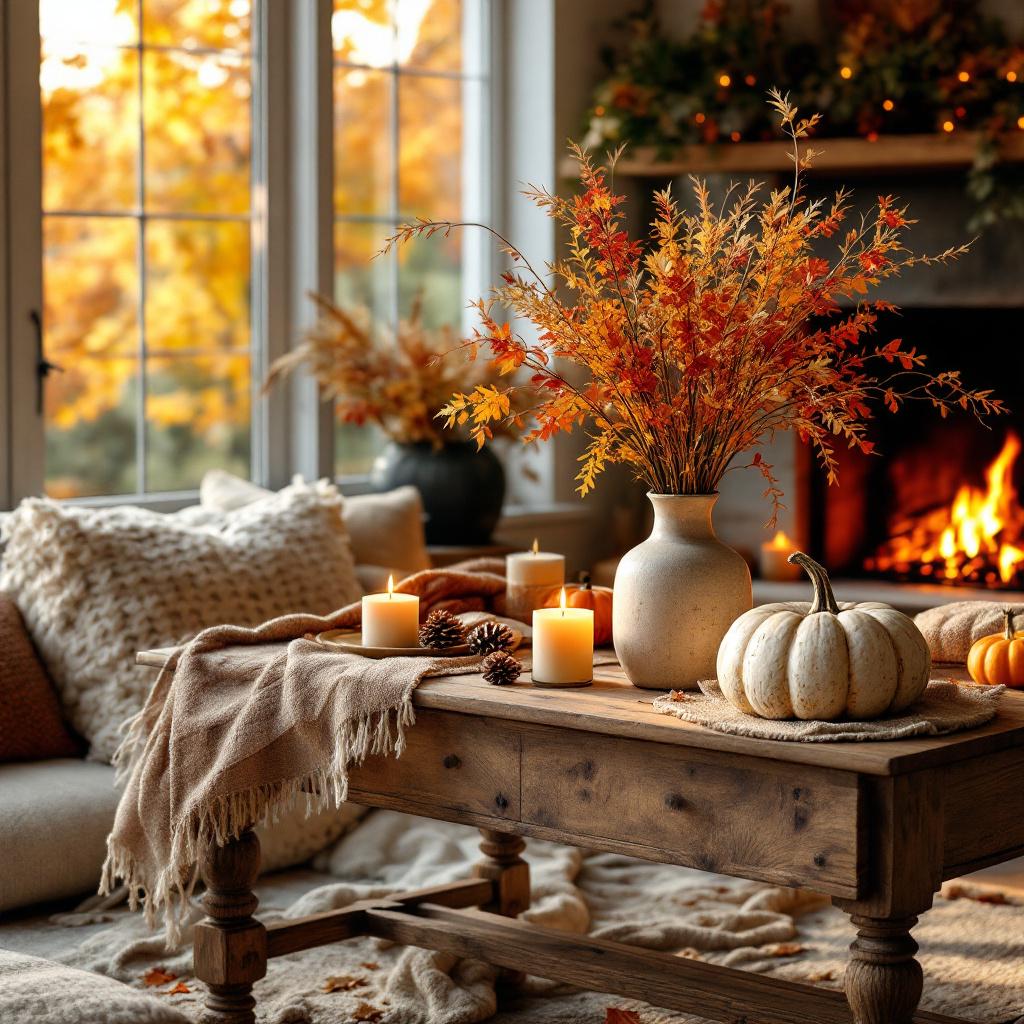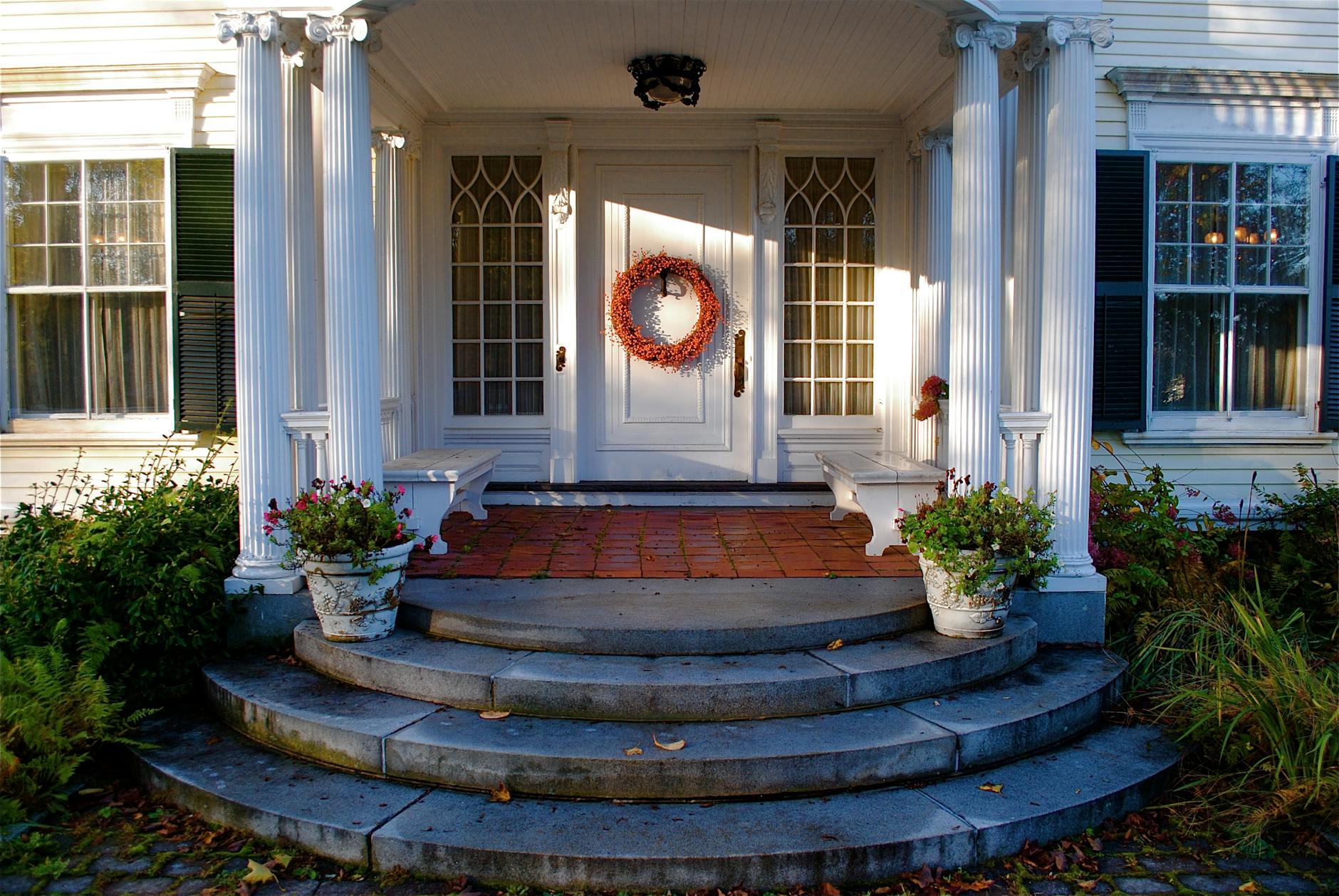Zero Waste Fall Decor: Fresh Ideas for a Cozy, Sustainable Season (2025 Guide)
Crisp leaves crunch beneath your boots as the cool air fills with the scent of spiced cider. Autumn’s glow settles in, painting the world in russet and gold. There's a simple joy in making a space feel inviting for the season, but it doesn't have to come at the planet’s expense. Zero waste fall decor gives you all the cozy charm—without the plastic or piles of trash.
This year, earthy colors like deep rust, olive, and charcoal have taken center stage, showing up everywhere from fabric napkins to repurposed vases. People are skipping plastic pumpkins in favor of foraged branches and dried wildflowers plucked right from the backyard. You see thrifted treasures and upcycled finds becoming the stars of seasonal tables, revealing that fall style can come from what you already have.
2025’s top trends highlight warm textures, organic shapes, and relaxed, lived-in looks. Even the smallest swaps—a wooden crate for a centerpiece, a bunch of acorns gathered from a stroll—bring nature indoors and cut down on waste. It’s about celebrating fall’s bounty, not cluttering your space with more throwaway stuff.
Get ready to discover simple swaps and fresh ideas. These tips will help you style a welcoming autumn home while treading lighter on the earth. The best part? Most you can start using today.
Why Choose Zero Waste for Your Fall Home
The thick scent of cinnamon and the glow of early-evening sun can make any fall room feel magical. But behind the beauty, mountains of plastic pumpkins and synthetic garlands end up in landfills or sneak into waterways each year. Choosing zero waste for your autumn decor is more than a look—it’s a chance to fill your home with warmth and a story, not just stuff. When you preserve what’s special about the season, you build space for real comfort that’s meant to last.
Protecting Nature One Decoration at a Time

Most single-use party decor and artificial wreaths are made from plastic, foam, and dyes. They often break after just a season, then end up crowding trash bins or littering streams and forests. Oceans feel the effects, too—microplastics from synthetic decorations are found in shorelines and marine life.
Switching to zero waste habits means breaking this cycle. Imagine shelves lined with glass jars filled with dried orange slices, bowls of acorns and pinecones from the park, or a garland woven from real autumn leaves. Recycled and foraged materials add stories of walks outdoors and afternoons spent with hot cider.
Here’s how zero waste basics fit right at home in fall:
- Reuse and rotate decorations each season, so nothing overstays its welcome or adds to landfill.
- Compost plant-based decor scraps, like dried leaves or pumpkins, instead of tossing them.
- Get creative with what you already have—transform last year’s baskets or jars with new touches.
Quick habit changes that stack up:
- Use pressed autumn leaves in DIY art or as part of a natural centerpiece.
- Save citrus peels or cinnamon sticks to dry for next season—these add scent and texture without plastic.
- Shred or compost any wilted stems or leftover bits after the holidays.
Every reused and composted piece means less waste at the curb and more wild beauty inside your home. For deeper ideas, this guide to sustainable fall decorations has practical tips for keeping autumn festive and green.
Save Money and Add Personal Flair
Envision your living room sparkling with warmth—layered throw blankets from the thrift shop, a centerpiece you built out of foraged pinecones, and lanterns pieced together from old jelly jars. With zero waste, you create spaces where every item tells a part of your story. It’s a smart swap, too.
Fall is peak season for disposable decor, with US households tossing thousands of tons of plastic and synthetic items soon after. Meanwhile, a walk through your neighborhood, a stop at the thrift store, or a dig in your “already have that” box turns up treasures money can't buy at a big-box store.
A quick look at savings:
Decor TypeTypical Cost (Store-Bought)Cost to Make or Source Zero WasteFaux pumpkin centerpiece$20–$40$0 (foraged gourds or squashes)Synthetic garland$25–$50$0 (leaves, twine from home)Glass jar lanterns$15 each$0 (upcycled food jars)Velvet pillows$30+ each$5–$10 (thrifted or homemade)
This year’s fall decor trends for 2025 show people layering textures—think reclaimed wood, old knitwear turned into pillow covers, or thrifted brass candlesticks. These finds feel nostalgic, authentic, and deeply personal. Pinterest even reports vintage maximalism up 260 percent for fall as more people pick self-expression over mass-produced pieces.
You get more than a smaller bill—you add personal touches and emotional value. Friends remember the candlelight in your handmade lanterns, not a label. Each thrifted pillow or dried flower arrangement feels like a chapter of your story, not seasonal clutter.
For more inspiration on zero waste fall decor that blends beauty and savings, check out these ideas for reusing and repurposing.
Choosing zero waste lets your fall home grow richer with every memory, not every receipt.
Gather Eco-Friendly Materials for Lasting Decor
Step into a quiet afternoon that smells faintly of pine and rain. Imagine a walk in the woods or a thrift store sweep, where each find feels like a small story waiting to be told. Here is where zero waste decor begins—by gathering textures and treasures that invite the earthy calm seen in 2025’s trend toward warm neutrals and natural materials. You’ll meet rough wool, smooth glass, warm timber, and soft linen like old friends, all ready to shape your space for fall.
Forage and Use What Nature Provides
Let the season guide your hands as you gather. Fallen leaves, crisp and curled, lie scattered along the trail. Pinecones nestle against tree roots, while acorns collect in wet moss. Seed pods, dried grasses, and berry husks glow with autumn color. A simple linen sack or woven basket keeps these finds dry and fresh—avoid plastic to skip the extra waste.
Before displaying your foraged pieces, give them a quick brush to remove dirt. Storing them in breathable containers keeps them crisp and mold-free. Each foraged treasure means one less piece of packaging in the trash. Use pinecones stacked in a glass bowl for a rustic centerpiece or gather leaves and tie them with twine for an organic wall arrangement. Try weaving dried grasses onto a length of jute for a delicate garland.
For more tips on how to clean, store, and display natural materials, visit this guide to sustainable fall decorations.
Transform Everyday Items into Treasures
Look around your home for simple materials that can get a second life. Mason jars, washed and dried, take on a new look as candle holders placed along a window sill. Old cotton shirts can be cut and hemmed into table runners or cloth napkins (the faded checks and stripes add instant warmth to your table). Spare wood scraps—maybe from an old crate or shelving—work well painted or left natural for small signs that welcome guests.
You don’t need fancy tools. Rely on hot glue, a sewing needle, or sandpaper. Stick to color palettes anchored in cinnamon browns, soft creams, and harvest gold. Citrus peels, whole cloves, or twigs from the yard bring nostalgic scents and texture to any upcycled piece. These approachable projects show that even those new to DIY can start with what’s on hand and a little imagination. Detailed tutorials for these easy upcycles can be found at DIY Fall Decor: Upcycling Thrift Store Finds.
Hunt for Secondhand Gems
Picture running your fingers across a heavy brass tray or thumbing through a pile of wool throws at the local flea market. Baskets made from twisted willow and vintage glassware in jewel tones—deep emerald, amber, garnet—catch the light and tell stories of past autumns. Choose lasting materials: handmade pottery, wood bowls, glass, and metal objects that will stand the test of time rather than fall apart after one season.
Seek out the textures and shapes that speak to cozy evenings—thick-knit fabrics, reclaimed wood frames, or handwoven baskets. Vintage glass is a stand-out for 2025, especially pieces in moody colors that echo the season’s grounded neutrals. Blend these finds with foraged nature for a rich, layered look that no store display can match. For inspiration on finding and styling secondhand pieces, explore Sustainable Fall Decor Ideas.
By mixing the bounty of the outdoors, small home upcycles, and secondhand treasures, you create autumn decor that feels inviting, wise, and completely waste-free.
Simple DIY Projects to Warm Your Spaces
Nothing says autumn like making a few meaningful updates in your favorite nooks, especially when you can feel good about every detail. With a few gathered materials and time for your hands to remember old skills, you can quickly add comfort and color without bringing home more waste. These projects are all about the genuine pleasure of making something by hand—carefully, slowly, with the intent to welcome not just guests but also the season itself.
Craft a Foraged Wreath for Your Door

Step out into the brisk air and look for bendable vines near the hedge, wild berries along the trail, or sprays of dried grasses swaying on the roadside. Form your finds into a loose circle, letting the curve of each branch guide your hands. Tuck in poppies or rosehips for color, then use twine or thin wire to hold everything steady.
To add a personal touch, tear strips from old linen shirts or a faded silk scarf for ribbons. The fabric's worn edge and soft weight bring a subtle, lived-in charm that feels both intentional and homey. When your wreath sways on the door, each breeze seems to wake its natural scent and color—a quiet hello to anyone who visits.
Experiment with:
- Acorns tucked by the bow for earthy contrast
- Ribbons in deep green or warm ochre made from old clothes
- Soft layers of dried herbs (like rosemary or lavender) for a rustic look and faint scent
Get more detailed step-by-steps for natural wreaths at this foraged fall wreath guide.
Make Centerpieces from Recycled Vessels
Imagine a thrifted bowl taking center stage on your kitchen table, filled with walnuts and unshelled pecans that catch candlelight. Find a vessel—vintage glass, chipped pottery, even a sturdy soup bowl will do. Arrange small pillar candles in the middle, nestled among whole nuts, tiny gourds, or dried fruit slices.
To give your centerpiece extra texture, dab a little glue along the rim and press on moss you gathered or pull from a bare patch in the yard. If you want a moodier color, brush a thin layer of terracotta paint over the bowl’s outside—let a bit of the old pattern peek through for a layered effect. These details add unexpected warmth, and each bowl quietly shares its second-chance story at every meal.
Tips for a standout recycled centerpiece:
- Use soy tealight candles for a soft fall glow
- Paint only part of the vessel for a dipped-color look
- Fill gaps with tiny pinecones, dried beans, or sliced citrus
Check out these sustainable fall decor ideas for more ways to use recycled homewares in your tablescapes.
Sew or Tie Cozy Textile Accents
The quickest way to change a room’s mood for fall is to refresh your soft goods. Have a scarf that’s gone out of style but feels too nice to discard? Fold it and tie the corners around a throw pillow—no sewing needed. The deep moss green or cable-knit texture brings a woodland feel straight to your sofa.
If you like fabric projects, cut old flannel shirts into squares and stitch (or even glue) them into pillow covers or placemats. For anyone short on time, tie fabric strips together to create a simple knotted garland—layer these over your mantel or drape across a table’s edge. Hunt for cloth printed with animal motifs like foxes, owls, or geese at secondhand shops to keep the look playful and personal while staying waste-free.
Ways to style new textile accents:
- Layer different greens and siennas for depth
- Use knotted scarves as pillow wraps—no sewing required
- Add a few animal-printed pieces for woodland warmth
Simple changes with fabric can change the atmosphere and remind everyone of the snug comfort fall brings. For even more upcycled inspiration, browse this zero waste fall decor roundup.
Style Your Home for Cozy, Waste-Free Fall
Zero waste doesn’t mean giving up warmth or beauty. Fall’s quiet magic comes alive when you layer natural textures and let earthy hues mingle in every corner. With simple, thoughtful touches, you can build a space that feels full, personal, and kind to the earth. Now is the time to pull together all the treasures you’ve gathered—think chunky knits, upcycled jars, and the soft metallic sheen of heirloom trays. Picture the glow of beeswax candles flickering on a cool night, casting gentle light on the stories held in each piece. Welcome to a home that’s cozy, inviting, and waste-free.
Layer Colors and Textures Thoughtfully: Paint Rooms Alive with Chocolate Browns and Linen Folds
Let every surface tell a story through layers. Grab those worn linen throws and softly rumpled blankets you've collected—their frayed edges and cozy weight make a room feel hugged from the inside. Fold one over the edge of a reading chair for a hint of chocolate brown or cinnamon. Even a single thrifted plaid, tossed over the arm of a sofa, invites guests to settle in as the wind picks up outside.
Instead of aiming for “new” with every season, focus on arrangement harmony. Start small:
- Drape a throw across the foot of a guest bed.
- Stack pillows in harvest colors, like burnt orange or olive, on a bench or window seat.
- Mix chunky knits with fine weaves—their clash of textures adds depth without clutter.
Place tarnished metals or vintage trays on tables to catch the last daylight. Their gentle shine works with raw woods and linen folds for a look both lived-in and elegant. Only rearrange instead of adding more. A thoughtfully styled mantel, finished with a few candlesticks, shines brighter than a crowded shelf. For more visual inspiration and real-life examples, browse these minimalist fall decorating ideas.
Create Focal Points with Personal Touches: Guide Setting Up Shelves with Mixed DIY Items and Photos for a Story-Rich Display
Bring meaning to your fall styling by building small story corners. Shelves and mantels become gathering places for personal treasures—maybe a wood-framed family photo nestled between homemade leaf garlands or a favorite mug from a childhood trip. Layer in handmade crafts: a pumpkin-shaped sachet stitched from flannel scraps, a jar of pressed acorns, or a bowl filled with dried cinnamon sticks.
Keep the balance. Choose a few pieces to display so nothing gets lost. Set up focal points:
- Place a small group of glass jars filled with foraged leaves and acorns on the mantel.
- Prop photos against a stack of vintage books for easy visual flow.
- Add a beeswax candle, cut and set in an old jam jar, for a glowy, golden warmth.
When night falls, these candles cast shadows that dance across wood and fabric. The light feels gentle and clean, and unlike paraffin candles, beeswax burns slow, filling your space with faint honey scent and no harsh fumes. Swap out harsh table lamps for clusters of candles and twinkle lights set in recycled lanterns or pie tins.
Let each shelf carry a memory—these small vignettes bring family close and invite laughter on chilly nights. Minimal, carefully chosen touches can turn even a simple bookcase into a fall centerpiece. If you want to explore more ways to tell your story with autumn style, these beautiful Fall 2025 decorating trends highlight the warmth, texture, and seasonal charm gaining ground this year.
Conclusion
Picture yourself with a warm mug in hand, soft lamplight flickering from a thrifted lantern and the afternoon quiet wrapping around you. This is what zero waste fall decor brings home: real comfort, honest beauty, and a quieter mind knowing less is headed for the trash.
Choosing to reuse and make your own decor isn't just about saving money or following trends. It's about slowing down and noticing the little things—a twist of cinnamon, a handful of acorns, or a faded scarf finding new life. You might be surprised how a few simple changes can make your space feel richer and more welcoming.
Start small. Try arranging a bowl of backyard finds or switching your usual throw for something secondhand. Share photos or ideas with friends, and celebrate each new detail you add. Every thoughtful corner tells your story and leaves room for more cozy nights to come.
Thanks for joining in on this year’s zero waste fall makeover. Try one project this week. Add your own touch, then invite others to see how simple, sustainable style can feel like home.





















